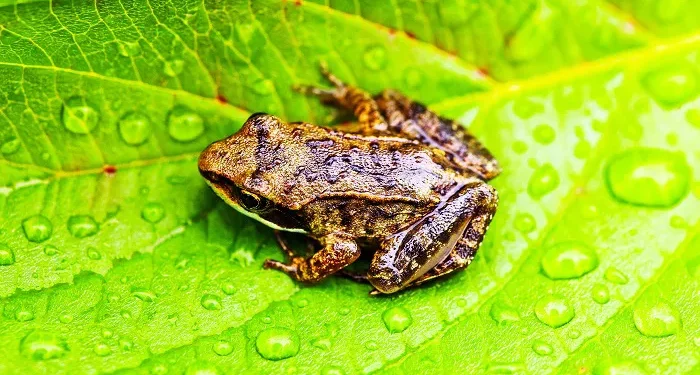A tiny Brazilian frog about the size of a pea may challenge the current record-holder for the world’s smallest vertebrate. The flea toad, Brachycephalus pulex, first described by scientists in 2011, is actually a frog species.
Discovery and Initial Observations
Shortly after its discovery, Mirco Solé at the State University of Santa Cruz in Brazil speculated that the species could be the smallest amphibian yet discovered. However, only a handful of specimens had been collected from their only known habitat on two forested hilltops in southern Bahia, Brazil. Crucially, their gonads had not been examined, which is necessary to confirm if they are adults.
Verification of Size and Maturity
Solé and his colleagues measured the body lengths of 46 flea toads. They verified the frogs’ maturity and sex by examining their gonads and checking for the presence of vocal slits in their throats, something only males have.
Adult B. pulex males average a touch over 7 millimeters long, slightly smaller than the females. This makes them smaller than the males of Paedophryne amauensis, a frog from Papua New Guinea that was, until now, considered both the smallest amphibian and the smallest vertebrate.
Astonishing Findings
“It’s absolutely clear,” says Mark Scherz at the Natural History Museum of Denmark in Copenhagen. “These really are potentially the smallest extant frogs in the world, which is astonishing.”
Not only is the average size shocking, but the smallest specimen in the study highlights the extreme diminutive nature of these frogs. “It’s 6.45 millimeters [long], which is 30 percent smaller than any adult male frog I have ever seen,” says Scherz. “It’s almost one millimeter smaller than the next smallest frog.”
Anatomical Quirks
At such small scales, frogs develop strange anatomical quirks. These include losing toes or having underdeveloped ears, which prevent them from hearing their own suitors’ songs. Some species can hardly jump because their balance organs are so diminutive.
Brachycephalus pulex opens new avenues for exploring the limits of vertebrate miniaturization. The ability of these flea toads to survive and thrive despite their tiny size demonstrates an intriguing aspect of evolutionary biology, highlighting how organisms can adapt to extreme physical constraints.
Ecological Significance
The discovery of such small vertebrates also emphasizes the ecological diversity within their habitats. The flea toads’ presence on the forested hilltops of southern Bahia indicates a unique ecological niche, which could be critical for understanding the dynamics of these ecosystems. Their diminutive size might help them exploit food resources that larger animals cannot, such as tiny insects and other microfauna.
Conservation Concerns
Given their limited known habitat and potentially small population size, Brachycephalus pulex could be vulnerable to environmental changes. Habitat destruction, climate change, and other anthropogenic factors pose significant threats to their survival. Conservation efforts must consider these factors to protect not only the flea toads but also the broader biodiversity of their ecosystem.
Future Research Directions
Further research is essential to fully understand the biology, ecology, and evolutionary history of Brachycephalus pulex. Studies on their reproductive habits, lifespan, and genetic diversity will provide deeper insights into how such small vertebrates manage to persist. Additionally, the search for even smaller vertebrates could reveal new species and broaden our understanding of vertebrate evolution and adaptation.
Conclusion
The Brazilian flea toad, Brachycephalus pulex, represents a fascinating example of extreme miniaturization in vertebrates. Its discovery challenges our perceptions of size limits in the animal kingdom and underscores the importance of preserving the diverse habitats where such unique species are found. As scientists continue to explore these remote areas, we can anticipate further remarkable discoveries that will enrich our knowledge of the natural world.
You Might Be Interested In:



























